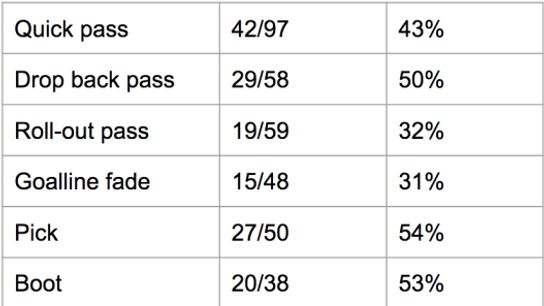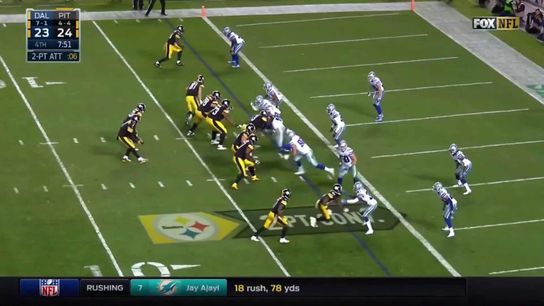So, you're going for two. More often than not, you're bypassing the sure thing of an extra point kick to roll the dice on a 2-point conversion not because you need to, but because you have no other choice. You're looking to turn a 3-possession game into two, a 2-posession game into one or to send a game to overtime. Or, if you're the gambling type, you're looking to take the lead you're nursing from comfortable to safe.
Either way, you really need to make it.
Coordinators choose plays designed precisely for this situation, then rep those plays throughout the season, all in service of sending their team to the line with a play they feel good about.
And yet less than half of all 2-point conversions are successful.
Noah Riley tracked all 506 2-point conversions over the past seven NFL seasons and found that only 48.8 percent were successful. What's more, a clear pattern emerged: nearly 80 percent of all 2-point plays were passes, and only 45 percent worked.
Obviously those 107 runs benefitted from the fact the defense expected pass; if the run/pass distribution evened out to 50-50, it's hard to believe 63.6 of runs would still be successful.
But, still, running plays succeed 15 percent more often than the overall average.
Here's how often each individual play succeeded (or, in the case of the fade, didn't succeed).

By far the least successful plays were the roll-out and the fade, two plays where the offense voluntarily shrinks an already crowded field into an even tighter area. The draw benefits from the fact offenses have conditioned defenders to expect pass, but even traditional running plays succeed at rates well above even the most successful pass plays.
